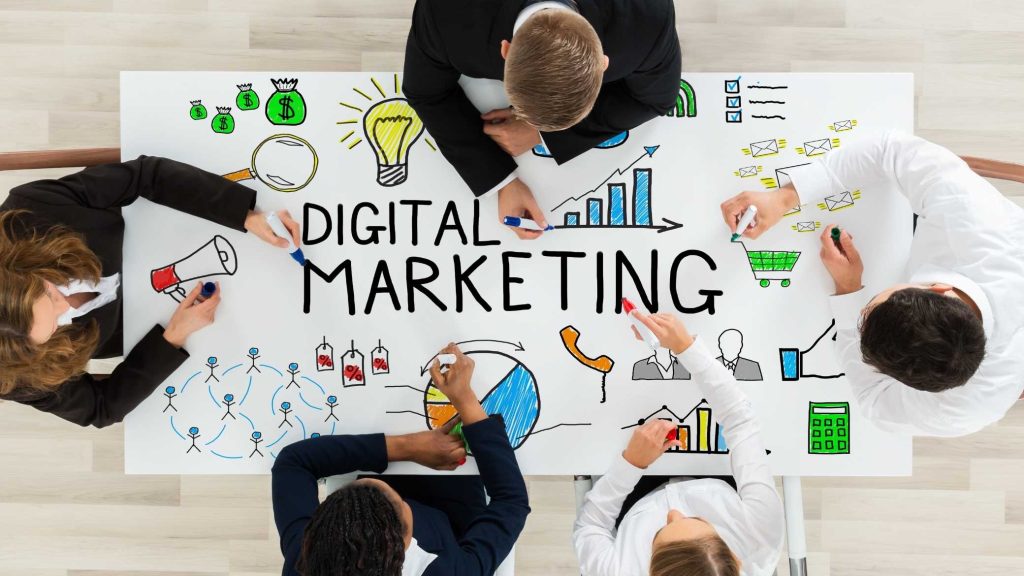What is DTC Marketing: Comprehensive Guide to Direct-to-Consumer Success in 2025
DTC Marketing: In 2025, Direct-to-Consumer (DTC) marketing is at the forefront of modern brand strategies. The DTC model has grown from a trend to a dominant force reshaping how products reach customers. By eliminating intermediaries, brands are building closer relationships with their audience, controlling the customer journey end-to-end, and optimizing for profitability, personalization, and scalability. As digital channels become more intelligent and accessible, DTC marketing empowers businesses to create niche, data-driven, and high-converting campaigns that directly address consumer needs.
Table of Contents
Understanding DTC Marketing: What Does Direct-to-Consumer Mean?

Direct-to-Consumer marketing, also referred to as D2C marketing, is a business model where brands sell their products or services directly to customers without relying on traditional retailers, wholesalers, or other third-party distributors. This model has surged in popularity due to the rise of e-commerce, social media platforms, and digital payment solutions, allowing brands to engage consumers on their own platforms like websites, apps, or marketplaces.
In essence, DTC is about complete ownership of the customer relationship—from product discovery and purchase to feedback and re-engagement. Brands can gather and use consumer data in real-time to improve product offerings, personalize marketing, and boost customer retention.
Why DTC Marketing is Booming in 2025
Several macro trends have contributed to the explosive growth of DTC in 2025:
- Digital-First Consumers: Shoppers are increasingly comfortable making purchases online, even for high-ticket or niche products.
- Advanced Logistics & Delivery Systems: Fast shipping and returns have become standard, making DTC logistics viable for startups.
- AI-Powered Personalization: With machine learning and data analytics, brands can now personalize content, recommendations, and offers at scale.
- Creator & Influencer Ecosystem: Influencers play a crucial role in brand discovery and storytelling, fueling DTC growth through content-driven campaigns.
- Ad Tech Evolution: Enhanced targeting on platforms like Meta and G Ads enables DTC brands to reach micro-segments efficiently.
Read More: Digital Marketing Automation : Tools and Benefits for Businesses – Comprehensive Guide 2025
Benefits of DTC Marketing for Brands in 2025
1. Total Control Over Brand Messaging
DTC brands are not confined to retail packaging or shared shelf space. They can design personalized experiences, maintain consistent messaging, and experiment with creative campaigns across owned channels.
2. Access to First-Party Customer Data
By cutting out middlemen, DTC brands gather valuable data directly from customers. This enables targeted marketing, improved product development, and refined sales strategies.
3. Higher Profit Margins
Without retailer cuts, DTC brands retain more revenue per unit. This allows for better reinvestment in product quality, customer service, and marketing innovation.
4. Faster Feedback Loop
Customer feedback on DTC channels is immediate. Brands can test new offerings, A/B test campaigns, and quickly adapt to market needs.
5. Stronger Customer Loyalty
DTC models naturally promote customer lifetime value (CLTV) strategies such as loyalty programs, subscription models, and exclusive deals, leading to long-term engagement.
Key DTC Marketing Strategies in 2025
1. Owned E-commerce Channels
Every DTC brand must have a highly optimized e-commerce platform. Sites built on Shopify, WooCommerce, or headless CMS systems offer personalized experiences, mobile-first designs, and integrated checkout systems.
2. Content-Driven SEO Strategy
DTC brands rely heavily on content marketing for organic visibility. Blogs, video tutorials, how-to guides, and user-generated content (UGC) help boost SEO and customer trust.
3. Influencer & Creator Partnerships
Influencers serve as both advertisers and brand ambassadors. Brands collaborate with nano, micro, and macro influencers across Insta, YT, and short-form platforms to humanize their stories and drive conversions.
4. Retargeting and Email Automation
AI-driven tools help DTC brands track user activity, retarget with relevant ads, and send automated emails that increase cart recovery and average order value (AOV).
5. Subscription-Based Models
To boost recurring revenue, many DTC brands now offer subscription options for consumables like wellness products, grooming kits, pet supplies, or fashion accessories.
6. Personalized Product Recommendations
Machine learning tools recommend relevant products based on browsing behavior, previous purchases, and social engagement—boosting cross-sell and upsell opportunities.
Top Digital Channels for DTC Brands in 2025

1. Insta Shopping
Integrated commerce features like “Shop Now” and affiliate storefronts allow seamless shopping experiences directly within social feeds.
2. WhatsApp and Messenger Commerce
DTC brands are utilizing WhatsApp Business API for product queries, order updates, and even payments—making it a powerful channel for customer service and sales.
3. Email and SMS Marketing
Owned media like email and SMS remain vital for customer retention, flash sale announcements, loyalty rewards, and personalized storytelling.
4. G Search & Performance Max Campaigns
Paid ads remain a pillar of customer acquisition. G ‘s Performance Max helps DTC brands scale while optimizing across Shopping, Display, and YouTube.
5. YouTube Shorts & Reels
Video content fuels engagement. Product explainers, customer stories, and behind-the-scenes content are used to create trust and brand affinity.
Challenges of DTC Marketing in 2025
1. Rising Customer Acquisition Costs (CAC)
As more brands enter the DTC space, ad platforms have become more competitive. Strategic use of organic content, referrals, and loyalty programs helps reduce CAC.
2. Operational Complexity
Handling warehousing, shipping, returns, and inventory forecasting in-house or with third-party logistics (3PL) requires careful planning and tech integrations.
Buy Now : Professional Digital Marketing Course
3. Platform Dependence
Many DTC brands rely too heavily on one channel (like Meta or Insta), making them vulnerable to algorithm changes or policy shifts.
4. Scaling Profitably
While many brands achieve initial traction through niche targeting, scaling beyond early adopters can be expensive and requires strong brand positioning.
Examples of Successful DTC Brands in India (2025)
- boAt Lifestyle – Electronics brand dominating with youth-focused DTC campaigns
- Mamaearth – Leveraging influencer marketing and value-based storytelling
- Sleepy Owl Coffee – Direct sales through web, app, and email for high-margin growth
- Lenskart – Integrating DTC and omni-channel retail for a seamless customer experience
- XYXX Apparels – Targeted DTC campaigns in the men’s fashion segment
Best Tools and Platforms for DTC Marketing in 2025
- Shopify Plus – Scalable e-commerce platform with DTC-first features
- Klaviyo – Email marketing tool for personalization and automation
- Razorpay Subscriptions – For managing recurring payments in India
- Gorgias – AI customer support platform for e-commerce
- Hotjar & Crazy Egg – For analyzing user behavior and improving UX
- Shiprocket – Streamlined logistics for Indian DTC brands
Future of DTC Marketing: What’s Coming Next?
- AI Shopping Assistants that recommend products in real time based on natural conversation
- Live Commerce & Shoppable Videos becoming standard for product discovery
- Decentralized Brand Communities built on Web3 platforms for loyalty and exclusivity
- Voice Search Optimization for DTC discovery via smart devices
- Sustainability Storytelling becoming key for consumer trust and retention
Conclusion

DTC marketing in 2025 is more than a sales channel—it’s a brand philosophy focused on transparency, customer-centricity, and agility. With advancements in AI, digital commerce, and content creation, brands have unprecedented tools to build loyal communities and sustainable growth. Whether you’re launching a new DTC brand or scaling an existing one, success lies in delivering value consistently while staying connected to your customer’s evolving needs.
Buy Now : Professional Digital Marketing Course
Disclaimer: This article is meant for educational and informational purposes. Business strategies and marketing tools may vary based on industry, target audience, and evolving digital trends. The author provides independent research and insights as of 2025. Readers are advised to validate strategies based on their unique brand requirements and consult with professionals where necessary.



